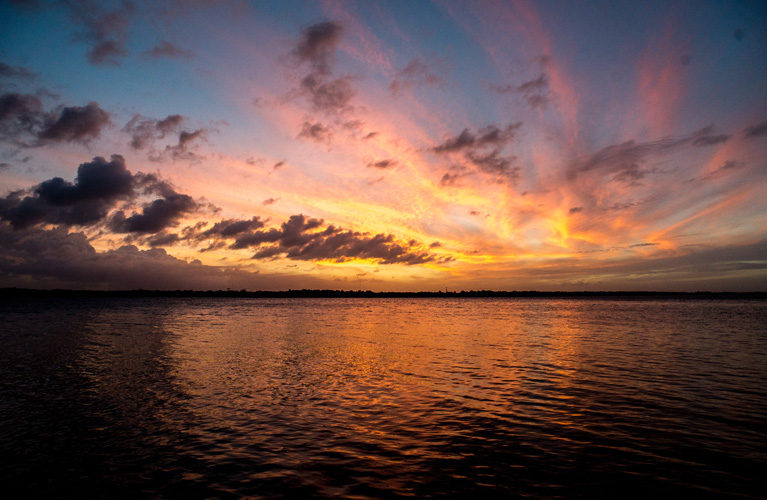
Vero Beach marine scientist Dr. Grant Gilmore says he is finally making significant progress in his long-term effort to have a dozen species of fish that reproduce only in three tributaries of the Indian River Lagoon protected under the U.S. Endangered Species Act.
Gilmore, founder and chief scientist at Estuarine Coastal and Ocean Science, Inc., has received a $30,000 grant from Martin County commissioners to petition the U.S. Fish & Wildlife Service to add three freshwater fish species to the endangered list – the Bigmouth Sleeper, Opossum Pipefish and Swordspine Snook.
The only North American breeding waters of these three species are the Loxahatchee, St. Lucie and St. Sebastian rivers.
Gilmore said he plans to add nine more local fish species with similar life histories to the petition he’ll submit to the federal government early next year.
He said all 12 of the fish are imperiled by toxic cyanobacteria blooms, herbicides and pesticides that wash into waterways, and competition for food and habitat from non-native fish species.
“The reason they’re endangered is we’re killing our fresh waters in this state,” Gilmore said. “These fish are really dependent on very specific locations and habitats and are very vulnerable to our efforts to eradicate what’s around them.”
Most of the potential listees are small fish that are little known, but several are popular with local anglers, including three snook species and the Bigmouth Sleeper, which can weigh up to three pounds.
Gilmore says none of the fish can be found breeding anywhere else in Florida or the U.S. except here. They also occur in tropical lakes, streams and freshwater river systems in Central America and some Caribbean islands.
Gilmore and scientific colleague Bill Loftus have been collecting samples of the fish from the three local rivers for years, learning details about their life histories that make them vulnerable to eradication.
For example, Bigmouth Sleepers favor undercut banks along oxbows, or natural curves in rivers. Most Opossum Pipefish – a relative of the better-known seahorse – are found in stands of native smartweed or panic grass along riverbanks. These bankside habitats are frequently targeted for herbicide treatment by water and natural resource managers, as well as riverside landowners. The herbicides destroy plant life and poison aquatic creatures.
Another of endangered fish, the Violet Goby, burrows in soft mud river bottoms where pesticides and herbicides tend to settle.
In order to be listed under the Endangered Species Act, an animal or plant must be threatened by habitat loss, overuse, disease or predators, lack of existing regulations to protect it, or other manmade or natural factors. Gilmore said having the support of Martin County and the city of Stuart is “powerful”. Now he’d like to get the cities of Vero Beach and Sebastian, as well as Indian River and St. Lucie counties involved.
The other nine species Gilmore wants to protect are the Mountain Mullet, Burrow Grunt, River Goby, Slashcheek Goby, Violet Goby, Largescale Fat Snook, Smallscale Fat Snook, Whitemouth Croaker and Blackcheek Goby.
“You have to quantify the endangerment,” he said. “Habitat loss, genetics of the fish, water quality impacts, reasonable estimate of the population.”
If added, the 12 fish would join the list of more than 50 threatened and endangered species of plants and animals – including the West Indian manatee and the Smalltooth Sawfish – that inhabit the Indian River Lagoon region. The federal review process could take up to two years.



